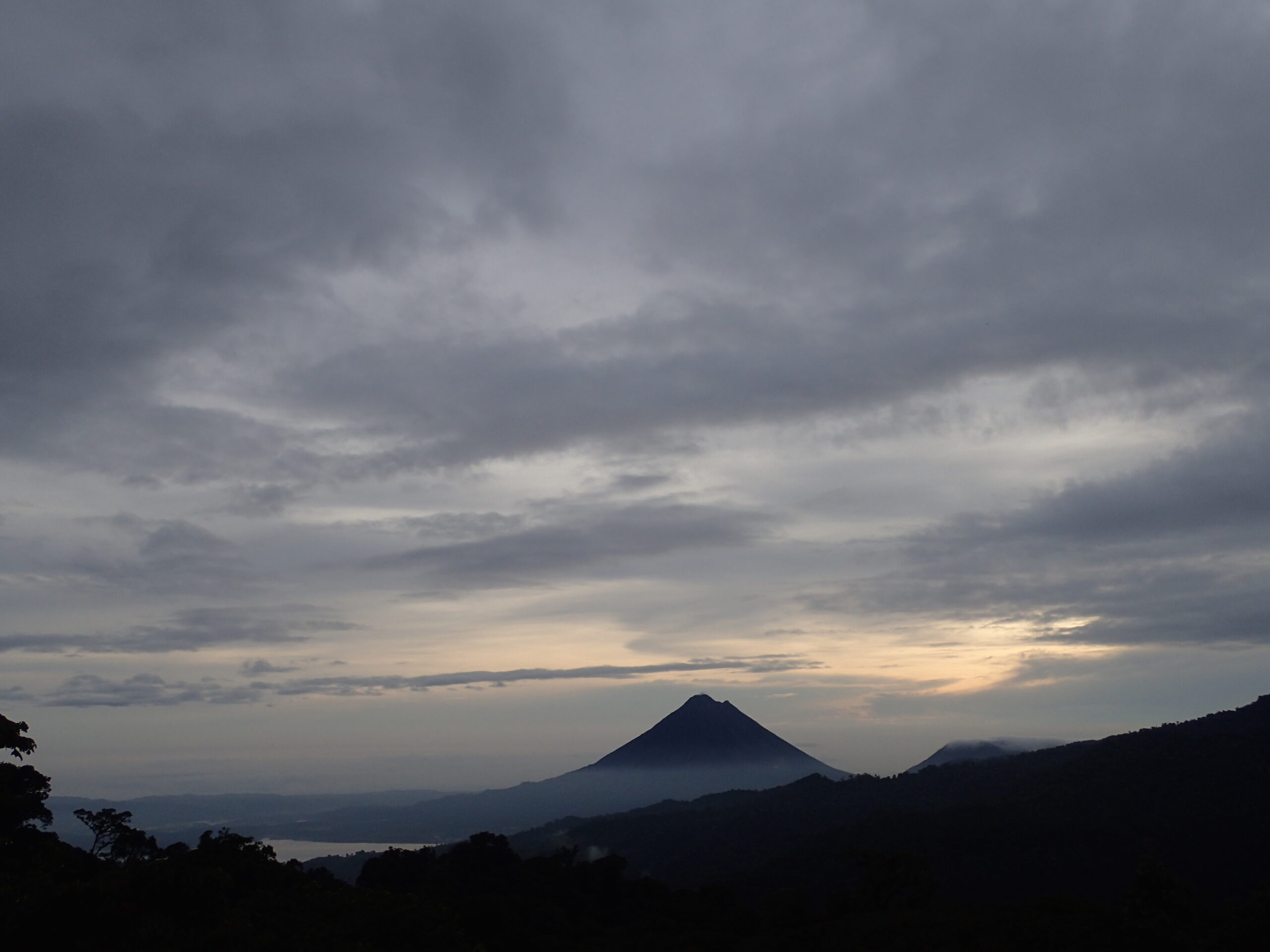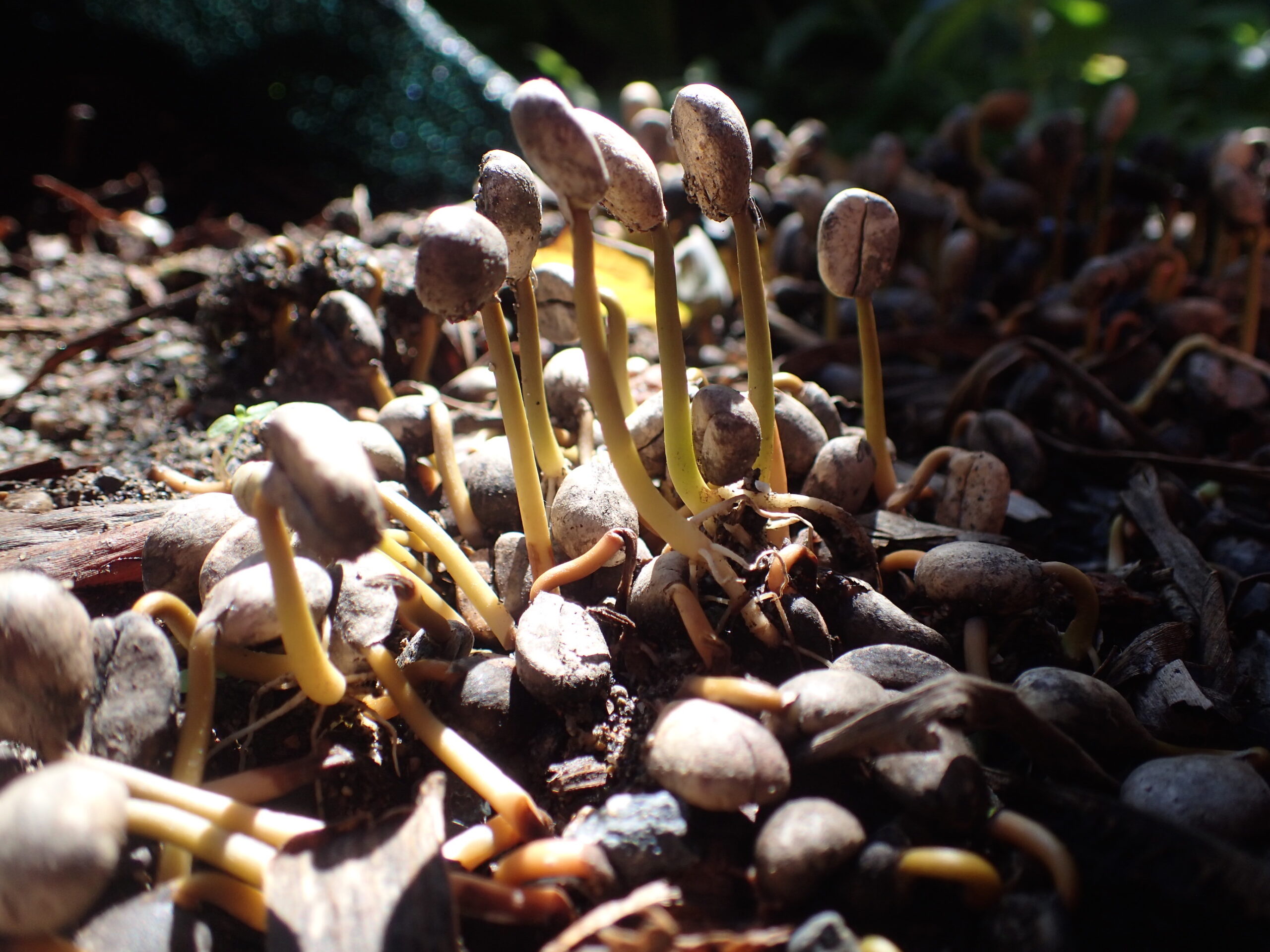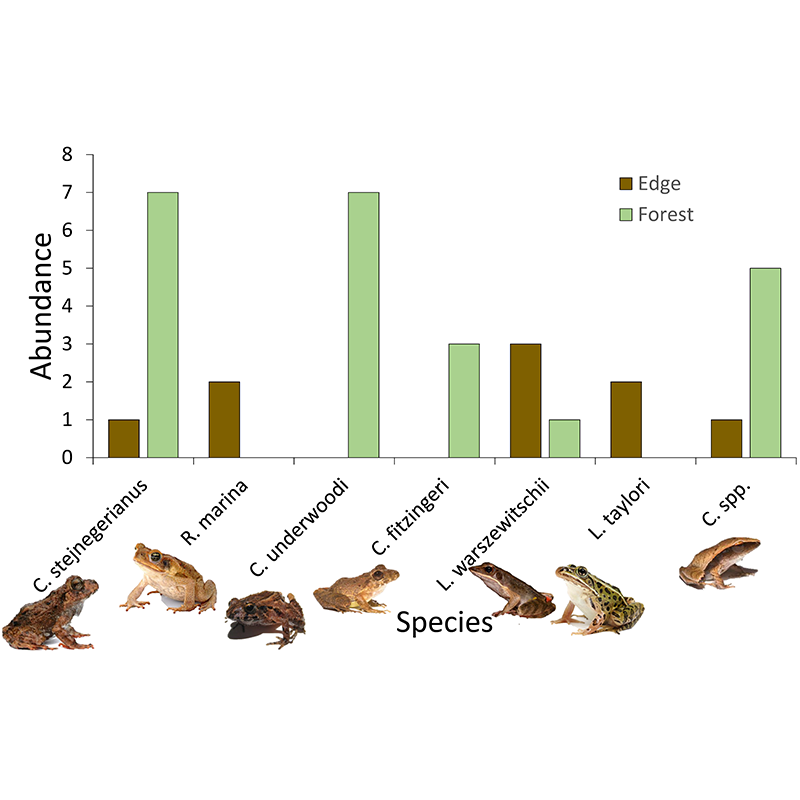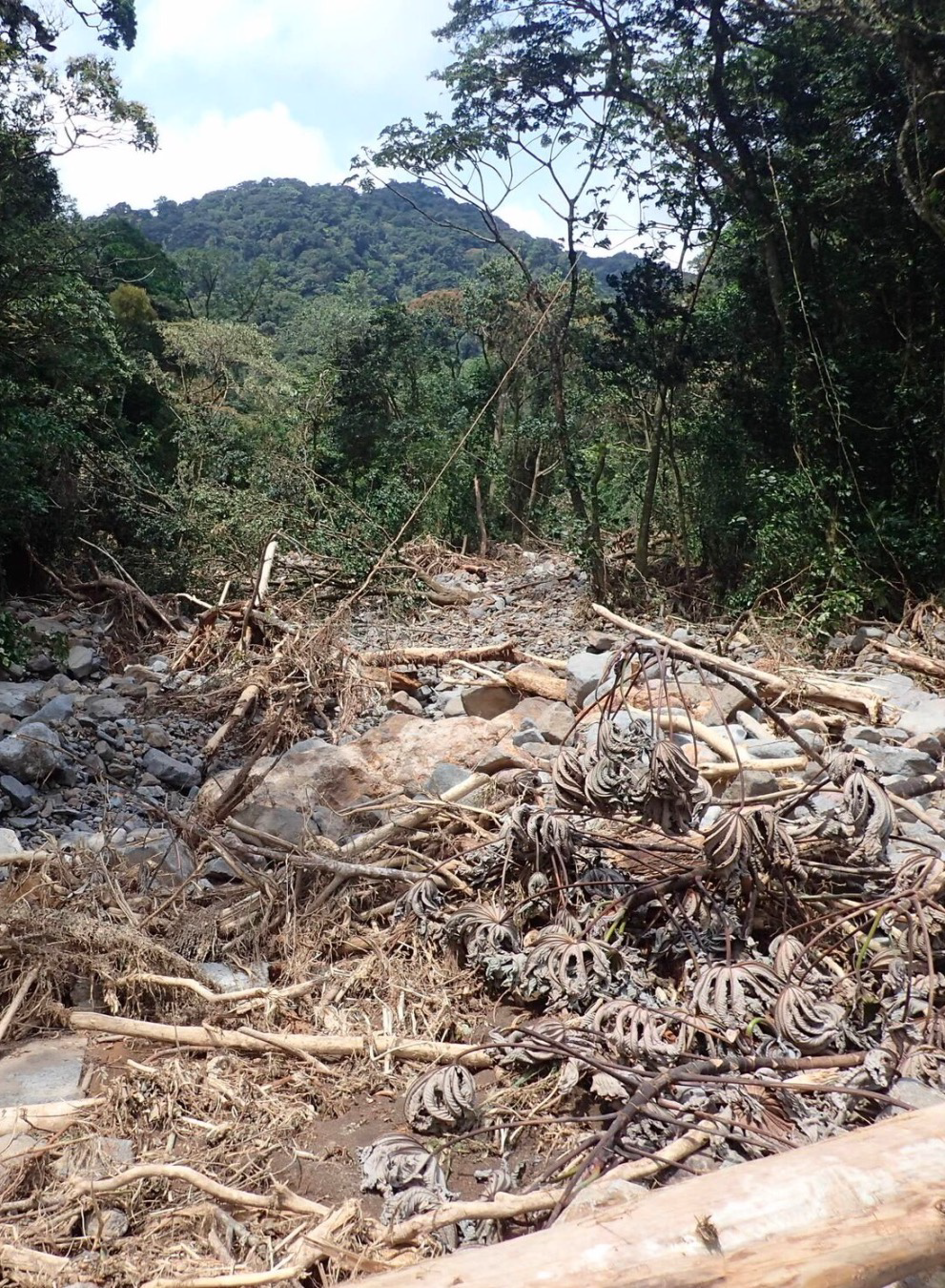During the mornings of August 30th and 31st, we went on a tour of the Café San Luis coffee farm translated by the resident naturalists on campus, Michaela and Dionne. Victor, the owner of the finca, walked us through the process of making coffee from seed to grounds.
For a new plant to grow, coffee seeds are collected off a ripe plant, removed from the outer fruit, planted directly into the ground and covered with banana leaves to keep moisture in for 45 days. Next, the germinated seed is transplanted either to a different area in the ground or to bags. The seed is then kept in the bags for a year to make strong and then two years after being in the ground, it will start producing fruit. The best soil Victor has found for the seed to grow is a compost from coffee leaves and soil.


One advantage to growing shade-grown coffee is the natural falling of leaves adds fertilizer to the soil. The fruit on a coffee plant turns red when ripe. In October and November, there are few ripe plants while in December and January the harvesting starts and there is a lot of coffee produced. Even 4 to 5 months later, they still have to visit each plant every week or two because they keep producing ripe seeds. Victor and his workers collect the ripe red seeds by hands and put them in a basket held with a belt around their waist. After each harvest, they check the quality of each plant because after 4-5 harvests, they don’t produce as many seeds and need to be cut down so new plants can grow from the roots. They also will cut down plants that get infected, with the Riya fungus being the most common disease. While the coffee tastes better and they get more money with red seeds, they will also sell the green seeds at the end of the harvest to anyone who like bitter coffee.

After Victor showed us how the coffee is grown, he showed us two different procedures for processing the coffee. The natural process had been used for 60-70 years and produces natural or honeyed coffee. They dry the seeds with the fruit still on to make it sweeter and leave coffee beans in sun to dry. However, it takes longer to dry and it is hard to deal with the rain. Once the coffee seeds turn black, they are ready to be put in a pilón where they are smacked until the parchment skins fall off and are blown away in the wind, leaving behind a gold bean. The beans are then ready to be roasted by being moved constantly in a pan above a fire until the last skin comes off. After this happens, the beans are crushed by a grinder or rocks and used to brew a cup of coffee.


This pure tradition has since been lost to a more mechanical means that Victor also showed us. The type of coffee produced in Costa Rica is the species Arabica. The Robusta species that is sold in a lot of other coffee-growing countries is illegal in Costa Rica since they have found it does not grow as well here so to increase production and have a standard, the government outlawed the other species. However, there are many different cultures, or varieties, of coffee that have their own characteristics. For example, Costa Rica 95 is shorter but resistant to disease and produces big beans while the F1 variety is taller. The yellow seed variety has seeds that are very delicate and fragile which fall off in rain. The original coffee variety that is not as common is called Café Antigua.




